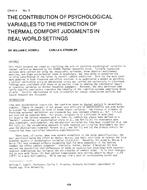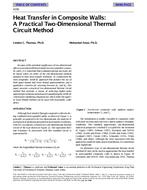Radiant systems are increasingly being used for heating and cooling spaces due to its benefits like better energy efficiency, improved thermal comfort andIAQ. In addition, the radiant systems reduce the ductwork and are aesthetically pleasing. However, the effectiveness of radiant systems for optimal designneed detailed study of impact of several parameters. The performance evaluation of cooling systems with radiant panels require considering convection aswell as radiation heat transfer modes. Using CFD simulation provides detailed flow and temperature distribution, thus helping optimize the coolingsystem design and location of supply and return flows. In this paper, detailed CFD simulation of a typical room with radiant panel for cooling has beenperformed. Typical heat loads from human, lights and computer are considered in the model. Different scenarios of return diffuser location, on floor and onceiling, are considered. Impact of radiation and buoyancy are modeled in the simulation and typical thermal boundaries are applied for walls, roof andfloor. The detailed temperature and flow distribution obtained from simulation are used to evaluate and optimize the cooling system, supply flowrequirements and diffuser locations.
Citation: 2017 Annual Conference, Long Beach, CA, Conference Papers
Product Details
- Published:
- 2017
- Number of Pages:
- 8
- Units of Measure:
- Dual
- File Size:
- 1 file , 5 MB
- Product Code(s):
- D-LB-17-C060


